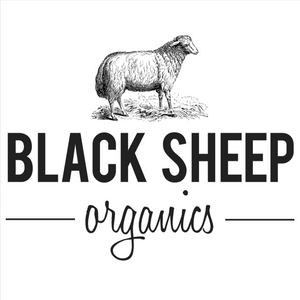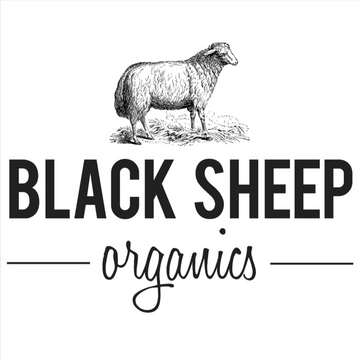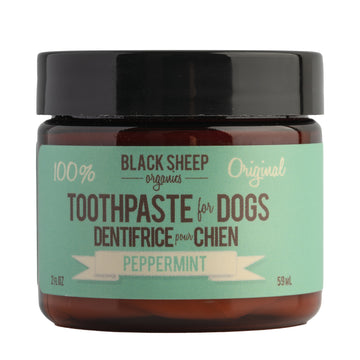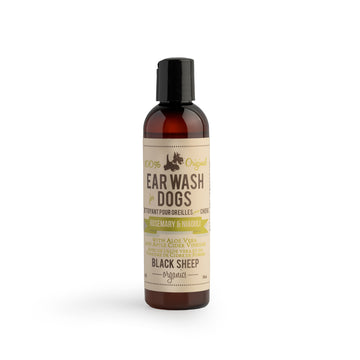How Do I Keep My Dog’s Fur Clean Between Baths?
Aug 26, 2024
Loving a dog often comes with the occasional doggy odor. While frequent baths aren't ideal for their skin and coat, keeping your furry friend clean between washes can be a challenge. This post provides practical solutions and expert tips to help you maintain your dog's fresh scent and sparkling fur, all without overdoing it on the shampoo.
Regular Brushing to Keep Your Dog’s Fur Clean
Brushing your dog's fur regularly is one of the most effective ways to maintain cleanliness between baths.
Types of Brushes for Different Fur Types
Choosing the right brush depends on the type of fur your dog has:
- Short Hair: A bristle brush or rubber curry brush works well to remove loose hair and stimulate the skin.
- Long Hair: Slicker brushes are great for detangling long hair, while pin brushes can help to smooth and shine the coat.
- Curly Hair: Use a slicker brush to detangle curls and a comb with wide teeth to gently work through knots.
- Double Coat: An undercoat rake is essential for removing loose undercoat hair, while a slicker brush can be used for general maintenance.
How Often Should You Brush Your Dog?
The frequency of brushing depends on your dog's coat type and lifestyle:
- Short-Haired Dogs: Once a week should suffice to keep their coat clean and free of loose hairs.
- Long-Haired Dogs: Daily brushing is recommended to prevent tangles and mats.
- Curly-Haired Dogs: Brushing every other day helps manage curls and prevent matting.
- Double-Coated Dogs: Brushing 2-3 times a week is necessary, especially during shedding seasons.
How to Clean Dog Fur Without a Bath Using Dry Shampoo?
Dry shampoo is an excellent way to keep your dog’s fur clean between baths. Here’s how you can effectively use dry shampoo to maintain your dog’s cleanliness.
How to Choose the Right Dry Shampoo?
Selecting the right dry shampoo is crucial for optimal results. Here are some key considerations:
- Ingredients:
- Opt for natural ingredients like aloe vera, oatmeal, and chamomile. These are gentle on the skin and effective in cleaning.
- Avoid shampoos with harsh chemicals, artificial fragrances, or sulfates as these can irritate your dog’s skin.
- Forms:
- Dry shampoos are available in powders, foams, and sprays. Choose the form that suits you and your dog's preferences.
- Sprays and foams are typically easier to apply, while powders might be more suitable for targeted cleaning.
- Skin Sensitivity:
- If your dog has sensitive skin or allergies, look for natural choices, hypoallergenic formulas or those specifically designed for sensitive skin.
- Scent:
- Prefer mild, natural scents like kiwi or coconut. Strong fragrances can be overwhelming for dogs.
- Brand Reputation:
- Choose products from reputable brands with positive customer reviews. This ensures quality and safety for your pet.
Step-by-Step Guide on Applying Dry Shampoo
Using dry shampoo correctly can make a significant difference. Follow these steps to ensure you’re doing it right:
- Preparation:
- Calm your dog and brush their fur to remove any loose hair and tangles. This makes the application smoother.
- Application:
- Spray or Foam: Shake the product well. Hold it a few inches away from your dog's coat and apply evenly, avoiding the face and eyes.
- Powder: Sprinkle a small amount directly onto the coat, focusing on areas that get dirtier, like the paws, underbelly, and rear end.
- Massage:
- Gently massage the dry shampoo into your dog’s coat using your fingertips. This helps distribute the product evenly and ensures it reaches the skin.
- Brush Through:
- After massaging, use a brush to remove any excess product. This also helps to distribute natural oils, leaving the coat shiny and smooth.
- Final Check:
- Inspect your dog’s coat to ensure there are no clumps of product left behind. Your dog should now have a clean, fresh-smelling coat without needing a bath.
Using Wet Wipes to Maintain Cleanliness Between Baths
Wet wipes are a convenient way to keep your dog's fur clean and fresh between baths. They’re easy to use, portable, and perfect for quick touch-ups after walks or playtime.
Types of Pet-Safe Wet Wipes
When selecting wet wipes for your dog, it's essential to choose ones that are safe and effective. Here are some of the best options:
- General Purpose Dog Wipes
- These wipes are versatile and can be used to clean dirt off paws, remove dander, and freshen up your dog's coat.
- Sensitive Skin Wipes
- Ideal for dogs with more delicate skin, these wipes are usually formulated with gentle ingredients like aloe vera and vitamin E.
- Anal Gland Hygienic Wipes
- Specifically designed to maintain hygiene in the anal area, these wipes often contain deodorizing and conditioning ingredients.
- Natural and Biodegradable Wipes
- For eco-conscious pet owners, these wipes are made from natural materials and are biodegradable, ensuring they are kind to both your pet and the environment.
How to Properly Use Wet Wipes on Your Dog?
To ensure you are using wet wipes effectively and safely, follow these steps:
- Start with Clean Hands
- Wash your hands before handling the wipes to prevent transferring any dirt or germs to your dog.
- Use the Right Amount of Pressure
- Gently wipe your dog's fur. Avoid pressing too hard as this can irritate their skin, especially in sensitive areas.
- Focus on High Traffic Areas
- Pay extra attention to areas that get dirty quickly such as paws, underbelly, and around the ears.
- Avoid Eyes and Inner Ears
- Do not use wipes on your dog’s eyes or inside their ears as this can cause irritation or infections.
- Dispose Properly
- After use, dispose of the wipes in a trash bin. Do not flush them as most wipes are not suitable for plumbing systems.
Diet and Hydration Tips to Promote Clean Fur
A well-balanced diet and proper hydration are crucial for maintaining your dog's overall health, including the condition of their fur.
How Does Diet Affect Your Dog’s Fur?
The food your dog eats has a direct impact on the quality and cleanliness of their fur. A nutritious diet supports healthy skin, which in turn leads to a healthier coat. Here are some ways diet influences your dog’s fur:
- Promotes Natural Oils: Nutrient-rich foods help produce natural oils that keep the fur smooth and reduce shedding.
- Reduces Skin Issues: Proper nutrition can prevent skin conditions like dandruff and itchiness, which can contribute to a dirty and unhealthy coat.
- Enhances Fur Growth: Key vitamins and minerals are essential for strong hair follicles and optimal fur growth.
Foods That Promote Healthy Fur
Including certain foods in your dog's diet can significantly improve the health and appearance of their coat. Here are some recommended foods and nutrients:
|
Nutrient |
Benefits |
Food Sources |
|
Omega-3 Fatty Acids |
Reduces inflammation, promotes shiny fur |
Salmon, flaxseed, fish oil supplements |
|
Vitamin E |
Supports skin health |
Leafy greens, sunflower oil, eggs |
|
Biotin |
Strengthens fur |
Liver, eggs, sweet potatoes |
|
Protein |
Essential for hair strength |
Chicken, beef, lamb |
|
Zinc |
Prevents dry skin |
Pumpkin seeds, chickpeas, meat |
Incorporating these nutrients ensures your pet receives a balanced diet that supports healthy, clean fur.
Importance of Hydration for Skin and Fur
Hydration is just as important as diet when it comes to maintaining a healthy coat. Water aids in numerous bodily functions that directly affect skin and fur condition:
- Moisturizes Skin: Adequate water intake keeps the skin hydrated, preventing dryness and flakiness.
- Supports Metabolism: Proper hydration helps in efficient nutrient absorption, ensuring the coat remains nourished.
- Aids Detoxification: Water helps flush out toxins, reducing the risk of skin issues that can dirty your dog's fur.
Tips for Ensuring Proper Hydration
- Provide Fresh Water Daily
- Make sure your dog always has access to fresh, clean water. Replace it regularly to ensure it remains enticing.
- Monitor Water Intake
- Keep an eye on how much water your dog drinks. If you notice significant changes, consult with your vet.
- Add Moisture-Rich Foods
- Include moisture-rich foods in your dog’s diet, such as wet food or water-rich fruits and vegetables like cucumbers.
- Use Hydration Aids
- Consider products like pet water fountains that encourage drinking through movement and sound.
How to Clean Dog Fur Without a Bath Using Natural Remedies?
Natural remedies offer an effective, safe alternative for keeping your dog's fur clean between baths. These methods are particularly useful for pet owners who prefer chemical-free solutions and want to minimize the use of commercial products.
Natural Remedies for Cleaning Dog Fur
Here are some natural ingredients you can use to keep your dog’s fur fresh and clean:
- Baking Soda:
- Acts as a natural deodorizer and mild cleaner.
- Can absorb odors and remove dirt without the need for water.
- Apple Cider Vinegar:
- Known for its antibacterial and antifungal properties.
- Helps to balance the pH level of your dog’s skin, keeping it healthy.
- Coconut Oil:
- Moisturizes the skin and fur.
- Contains natural antibacterial properties that help maintain cleanliness.
- Aloe Vera:
- Soothes the skin while providing a gentle cleaning effect.
- Ideal for dogs with sensitive skin.
Application Methods and Precautions
Using natural remedies requires proper application to ensure your dog’s safety and effectiveness:
- Preparation:
- Always conduct a patch test with any new solution on a small area of your dog's skin to check for allergic reactions.
- Application:
- Baking Soda: Sprinkle baking soda evenly over your dog’s coat. Let it sit for about 5 minutes, then brush it out thoroughly to remove any residue.
- Apple Cider Vinegar Solution: Mix apple cider vinegar with water in a spray bottle. Lightly mist your dog’s fur, avoiding the face and eyes. Let it air dry naturally.
- Coconut Oil: Take a small amount of coconut oil and gently rub it into your dog’s fur. Focus on dry or dirty areas. Use a soft towel to wipe off any excess oil.
- Aloe Vera Gel: Apply aloe vera gel directly to your dog’s coat. It doesn’t need to be rinsed off and can be left to dry naturally.
- Precautions:
- Avoid using these remedies too frequently. Overuse can lead to skin irritation or imbalance in natural oils.
- Ensure that your dog does not ingest large quantities of these substances, as they might cause digestive issues.
- Always consult with your veterinarian before introducing new treatments, especially if your dog has pre-existing skin conditions or allergies.
Maintaining your dog’s fur cleanliness between baths is simple with regular brushing, dry shampoo, wet wipes, and natural remedies. These methods are easy to implement and keep your dog looking and feeling fresh. By integrating these practices into your routine, you’ll ensure your pet stays clean, comfortable, and happy between grooming sessions. Invest a little time, and enjoy the benefits of a well-groomed, contented dog.











